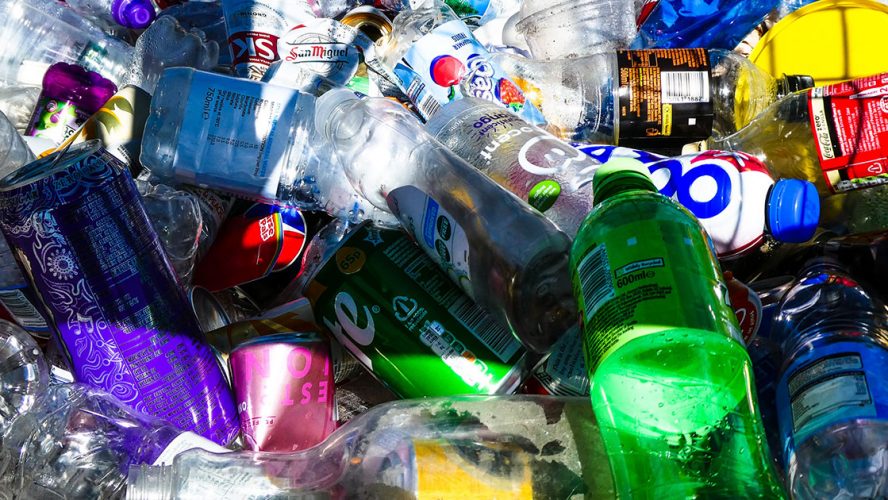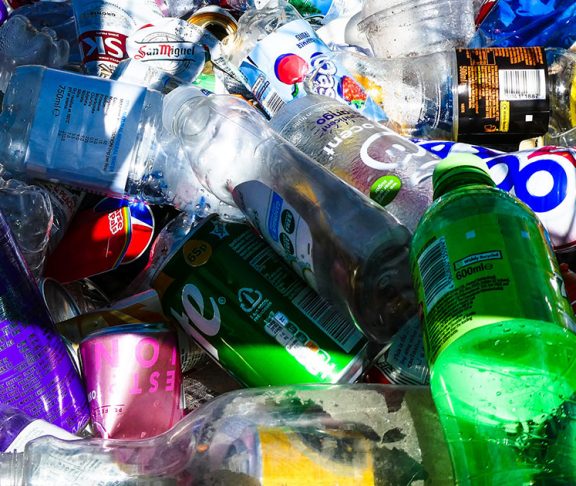Our world has a problem with plastic waste. Of the 8.3 billion tons of plastics produced since the 1950s, about60 percent has ended up in a landfill or the natural environment. The 8-12 million tons of plastic litter that wind up in the ocean every year is one of the most visible and alarming signs that we urgently need to tackle this problem today. Yet 95 percent of plastic packaging is still created for single-use, and plastic packaging remains on the rise globally.
Delivering industry-led solutions
Beating the global plastic problem will take action at every level. But as an alliance of 41 companies, including some the world’s largest brands and retailers, our Coalition of Action on Plastic Waste is in a powerful position to deliver industry-led solutions to help ensure no plastic waste ends up in nature.
The coalition was founded in 2020 with the aim of developing a more circular approach to the development and processing of plastic packaging in the consumer goods industry. Its creation built off the CGF’s 2018 endorsement of the Ellen MacArthur Foundation’s New Plastics Economy. In line with the vision of the New Plastics Economy Global Commitment, we believe moving from a linear to a circular economy requires a different approach to plastic usage, from production, consumption and reuse, to recycling and disposal. This new approach requires collaboration, sharing knowledge and best practices, and creating partnerships with different sectors and organizations that, under different circumstances, might not normally have come together to act.
With this in mind, the coalition decided to focus on four key priority areas: packaging redesign, developing a framework for optimal Extended Producer Responsibility (EPR) programs, encouraging recycling innovation, and piloting new programs in advanced and transitional markets to increase recycling rates.
Designing for the circular economy
In December 2020, coalition members finalized the first two of their “Golden Design Rules” for plastic packaging which will help cut unnecessary plastic use, ensure more recycled content in packaging, and help reduce the complexity of the recycling process for different types of materials, thereby increasing recycling rates. The Golden Design Rules are based on commonly adopted expert design guidelines, retailer design guidelines, advice published by reputable bodies, work of Plastics Pacts and country-specific legislation, and have been adapted by member company experts who are part of the Coalition’s Design workstream.
The first two rules focus on increasing the value of PET bottle recycling and removing problematic elements from packaging, such as carbon black, PVC (polyvinyl chloride) and EPS (expanded polystyrene), which complicate the recycling process. Consumers will be able to see the impact of these changes as everyday products such as single-use bottles, toiletries, household cleaning supplies, food wrappers and take-away containers will be packaged in materials that can be recycled more easily. The remaining seven design rules, which focus on eliminating unnecessary plastic packaging, will be published this summer.
A multi-faceted approach
We know that a complex problem requires a multi-faceted solution, and we must look beyond design innovation. Our members are also in the process of developing an optimal framework for Extended Producer Responsibility (EPR) programs to help aid the industry in its engagement with governments and policymakers to ultimately ensure circularity of the lifespan of packaging. “EPR can be a great tool to drive better collection and recycling,” said Aliya Kumekbayeva, Sustainability Officer at the CGF. “But it is important that it is designed in a fair and optimal way for all actors to be truly sustainable.”
In recent months, the workstream has been working to align on a common industry position of what an optimal EPR framework looks like and has launched an Optimal EPR Hub with the objective to translate these design principles and parameters into practical engagement with policy makers in 14 priority markets.
Coalition members are also working to explore the critical role that chemical recycling can play in increasing recycling rates for plastics that are not currently recycled at scale. We know that by engaging with stakeholders to ensure broad support for chemical recycling, our industry can send a strong demand signal to upstream suppliers for packaging that can be processed using chemical recycling methods.
Shaping the future
We are also collaborating with other key organizations that are working in parallel to help ensure no plastic waste ends up in nature. Achieving this goal will mean moving towards a new life cycle for plastic packaging — a circular life cycle where plastic never becomes waste or pollution, but is used again and again, in many different forms, releasing all its economic value whilst reducing carbon emissions.

